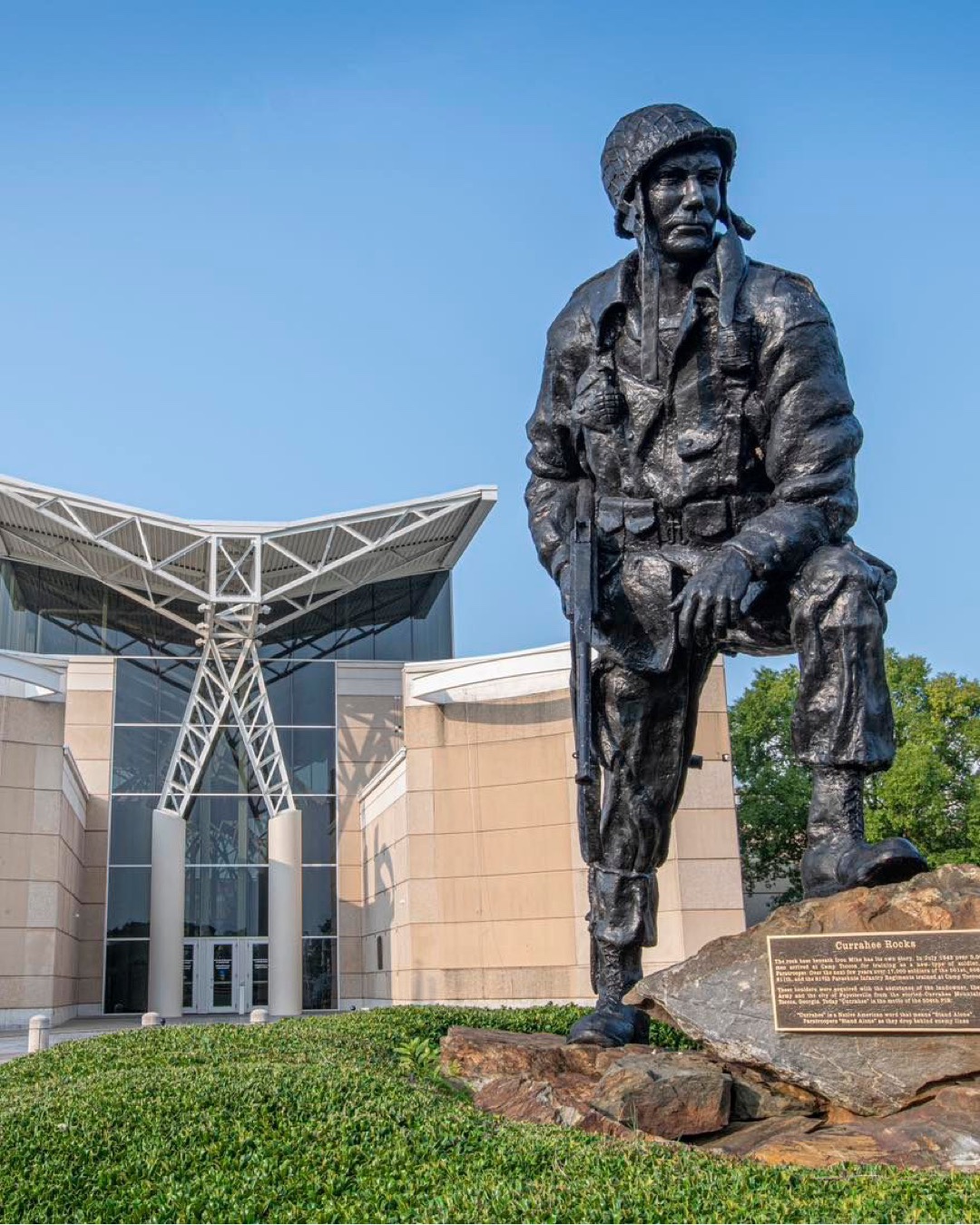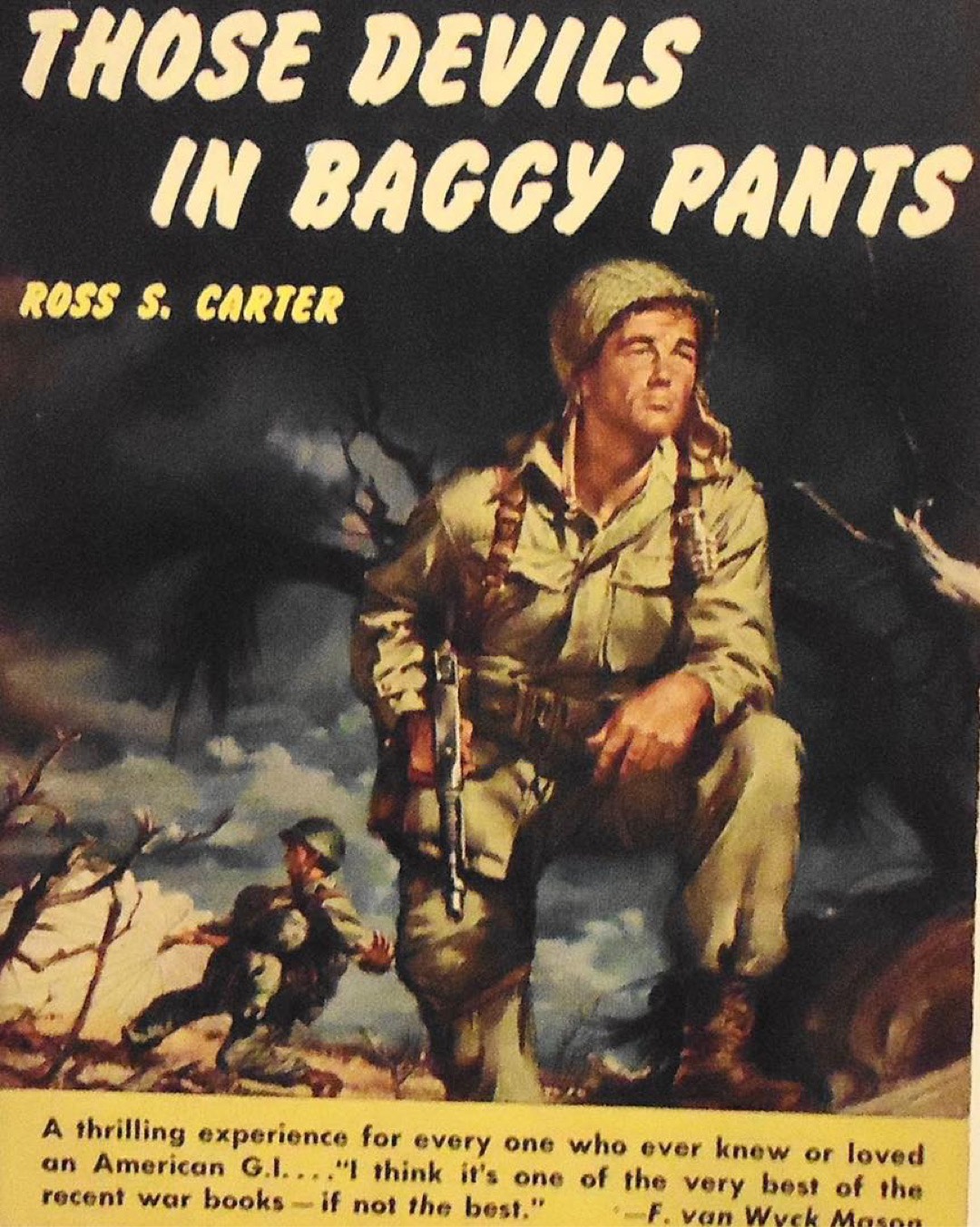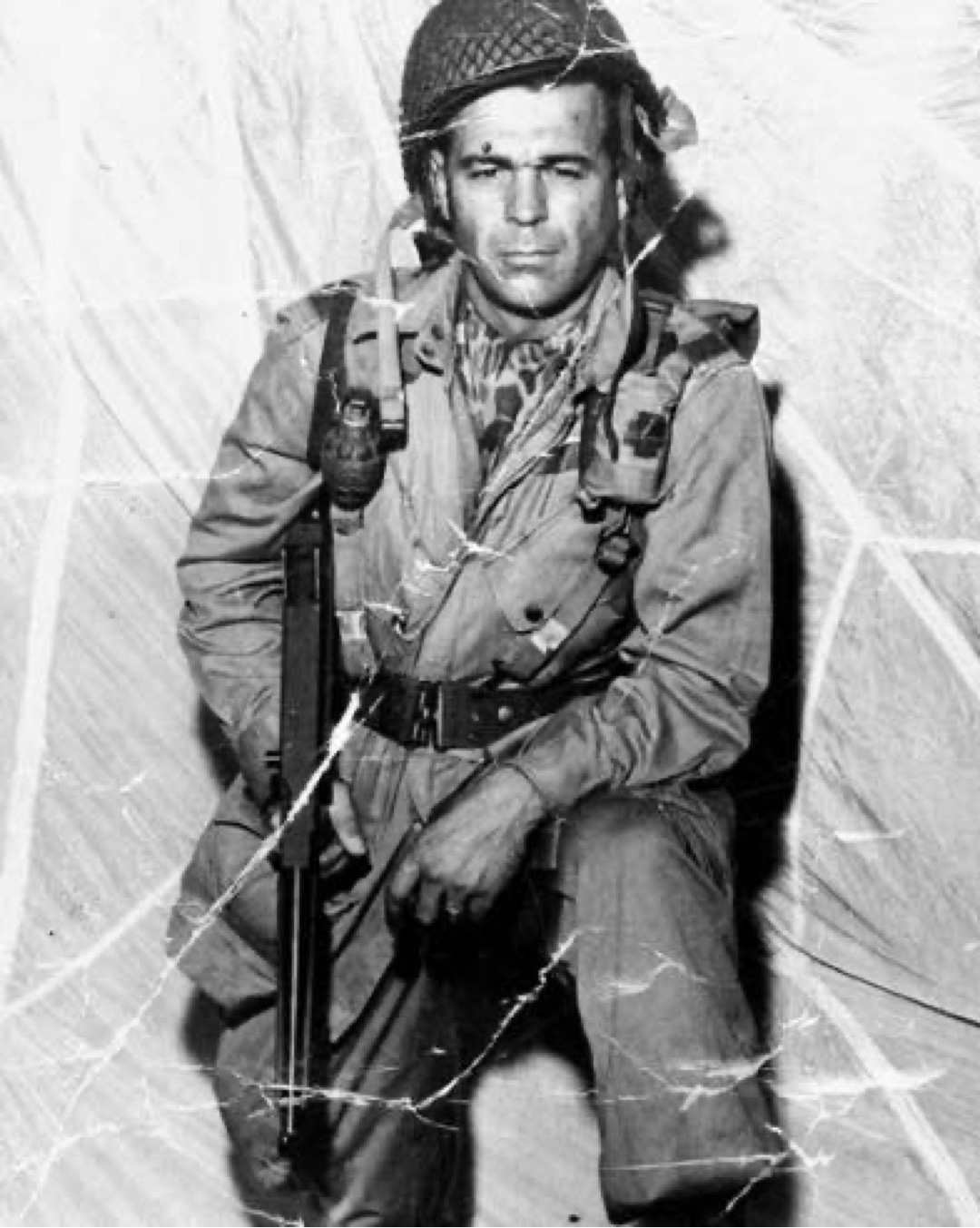Paratroopers everywhere will immediately recognize Iron Mike. Fayetteville’s Airborne and Special Operations Museum recently shared the history of this iconic figure.

In the spring of 1960, 18th Airborne Corps Commander Lieutenant General Robert Sink appointed Mrs. Leah Hiebert, a military spouse and sculptress, to design and fabricate a statue to encapsulate the spirit of the Airborne trooper. The original idea was inspired by the cover of Ross Carter’s Book, “Those Devils in Baggy Pants”.

Mrs. Hiebert, whose husband, Samuel L. Hiebert, served as an Army chaplain during World War II, created the statue in an old parachute packing facility. Sergeant MajorJames Runyon was selected as the model for the statue, and posed for over four hours a day, twenty minutes at a time while wearing his own WWII uniform. The photograph below was taken of Runyon to aide in the construction of the statue as it was being developed.

By November of 1960, the team fabricated the steel frame. The statue stands with his left foot in a raised position on a pile of rocks, and his upper body leans forward bearing weight on his elbow, which rests on his raised left knee. While the statue is officially named “The Airborne Trooper,” it is colloquially known as “Iron Mike”. The inscription on the base of the statue reads: “Iron Mike, In honor of Airborne Troopers whose courage, dedication, and traditions make them the world’s finest fighting soldiers”.
As the project neared completion, planners began looking for a suitable location to serve as its resting place. It was finally decided that the intersection of Knox Street and Bragg Blvd would house the 15 foot tall, 3,235 pound statue. On September 23, 1961, the statue was revealed. It quickly gained notoriety at Fort Bragg, but due to acts of vandalism, Iron Mike was later moved to the traffic circle between the Fort Bragg Club and the 18th Airborne Corps and Fort Bragg headquarters building in 1979. In 2005, the statue was replaced with a bronze version and the original, which had been deteriorating, was restored and refurbished and was placed at the U.S. Army Airborne & Special Operations Museum in 2010. In 2021, Iron Mike was refurbished again. He still stands watch and welcomes all visitors at the ASOM.


I always thought this was the SFC James “Jim” Hopper memorial statue.